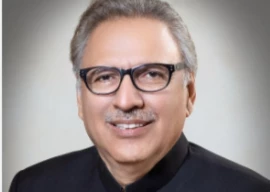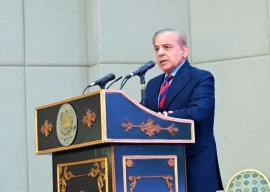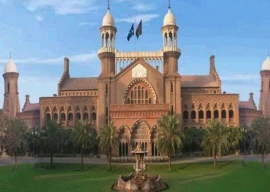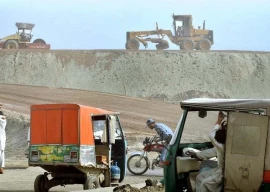
For the first time since the mid-1990s, KESC has had positive EBITDA (earnings before interest, taxes, depreciation and amortisation), a key measure of the financial health of the company, of around Rs3.5 billion. While KESC still had a net loss of Rs9.4 billion after interest costs were taken into account, the company’s management claims that KESC is on track to turn a profit during the current fiscal year. There may be reasons to take their claims seriously.
For starters, the Abraaj-led team at KESC has had a singular obsession with efficiency. According to Tayyab Tareen, the company’s CFO, KESC has invested upwards of $1 billion – raised through both debt and equity – in improving the efficiency and cost-effectiveness of its power generation, as well as its transmission and distribution system. Those investments, it appears, are about to begin paying dividends.
Power generation units that had an efficiency of about 25% are now operating at twice that efficiency, bringing overall production costs down, said Tareen in an interview with The Express Tribune. The company is also in the process of bringing online a new 560-megawatt gas-fired power plant that is likely to further improve generation efficiency as well as lowering costs.
Getting the right fuel mix
“We now have enough installed capacity to serve the entire city of Karachi’s needs,” said Tareen. “The key issue is fuel. If [the state-owned] Sui Southern Gas Company provides us with the amount we need, there would be no power outages in Karachi.”
Fuel seems to be the biggest issue for the company. Gas-fired power plants cost an average of Rs5.35 per unit to produce electricity whereas those run on furnace oil cost about Rs18 per unit. Yet the National Electric Power Regulatory Authority (Nepra) only allows KESC to bill consumers at an average rate of about Rs9 per unit.
At the right mix of fuel, the company would be able to bring its production costs significantly down from the average of Rs15 per unit that it costs them now. The gas shortages throughout the country, however, have prevented KESC from lowering its production costs that way.
In the short term, the company has no option but to protest against what they see as an unfair gas rationing policy. Yet the KESC has already put in motion several plans that would improve its long term situation. It is collaborating with global oil giant Conoco Philips and Engro Vopak (a subsidiary of the Engro Corporation) to import liquefied natural gas (LNG) for its power plants.
Over the longer term, KESC is planning on converting many of its oil-fired power plants to coal, a far cheaper source of fuel with a much more readily available supply. The company is seeking financing for the conversion from China.
KESC has also begun talks with the UK-based Oracle Coalfields to begin mining the vast coalfields in Thar, though even imported coal is a cheaper fuel option than furnace oil. Oracle has engaged the services of Citigroup to finance the project.
Reducing transmission and distribution losses
KESC’s success in managing Pakistan’s only integrated utility company – and the only one privately owned – has become something of a litmus test for prospective foreign investors looking to supply an energy starved economy. Success by Abraaj in turning KESC around – especially given the fact that Karachi is probably one of the hardest areas to manage a utility company in Pakistan – is likely to be encouraging to many investors.
Yet the company still have to overcome many challenges. Its relationship with its labour union remains testy, though the acute phase of confrontation appears to be over. The company also has a hard time with transmission and distribution losses – caused by both infrastructure flaws and stealing – a key struggle for any power company operating in third world economies.
On the power distribution side, the good news is that the company has brought technical losses (caused by faulty infrastructure) down from 10% to 7%, according to company’s CFO. The bad news is that the losses from stealing have not substantially gone down from the level of 25% at which Abraaj inherited KESC.
Tareen laid out at least part of KESC’s strategy to overcome this challenge. The company has isolated its most lucrative clients and ensured that its collects its bills from them. Of its 2.4 million customers, about 45,000 industrial units account for 40% of the electricity consumed in the city. KESC’s collection rate with those customers is 99.8%.
While Tareen acknowledged that such successes will be hard to replicate, the company has also begun isolating “good areas” versus “bad areas” based on how much theft there is in each and then allocating its service resources accordingly – not conducting repairs in “bad” areas until they agree to remove illegal connections and pay their bills, for instance.
Abraaj’s exit
Ultimately, however, Abraaj’s exit plan rests on separating the integrated business into three separate companies and spinning each off separately. Instead of being one utility company, KESC would have one separate company for power generation, another for transmission and the third for distribution.
Since KESC’s losses are concentrated almost exclusively in the distribution segment (which also accounts for 70% of the labour force), the power generation and transmission businesses are likely to be sold off for a hefty profit, which should more than make up for the losses from the distribution segment.
This strategy – known as ‘unbundling’ within KESC – is already being put in place, though it still requires regulatory approval. KESC management is structured as three separate business units, each with its own chief operating officer, reporting to the group CEO and CFO.
Tareen, however, was quick to point out that Abraaj was in no hurry to leave KESC. “The fund which has invested in KESC has a life of 12 years, which is extendable. We have only been here for three.”
Published in The Express Tribune, October 14th, 2011.
COMMENTS (8)
Comments are moderated and generally will be posted if they are on-topic and not abusive.
For more information, please see our Comments FAQ
























1715142871-0/imfsalary-(1)1715142871-0-270x192.webp)










This story lacks any element of being unbiased. Abraaj only wants to maximize the profit to itself and it's fund investors. If they have to cutoff power to the poor people of Karachi for 5 hours per day they will do so. This transaction demonstrates how corrupt our infrastructure has become - as very sad stage for a great nation. This company and Abraaj should all be thrown into prison! Agree that this is just another Abraaj PR spin story. Sadly this is too obvious.
Another story of Corporate Greed. KESC is making money on the cost of People's misery and nothing else. Has the load shedding been any better in the present, no it has not been. I am really sorry but I fail to see it as a success; but rather a mockery.
This is a well written and informative article.
Now Kesc should aim for reduction in the electricity prices. Electricity is far too expemsive for the public and industries to afford!
You did not mentioned the 700 MW of subsidized supply from WAPDA to KESC which it manipulates to generate hefty profits at the cost of consumers' plight. KESC frequently cuts down it's own generation to reduce it's production cost and save money. This model is something that actually paid off to them. Thanks to investor-politician nexus!!!
Bravo KESC...keep that spirit up...you can achieve all of this, believe me.